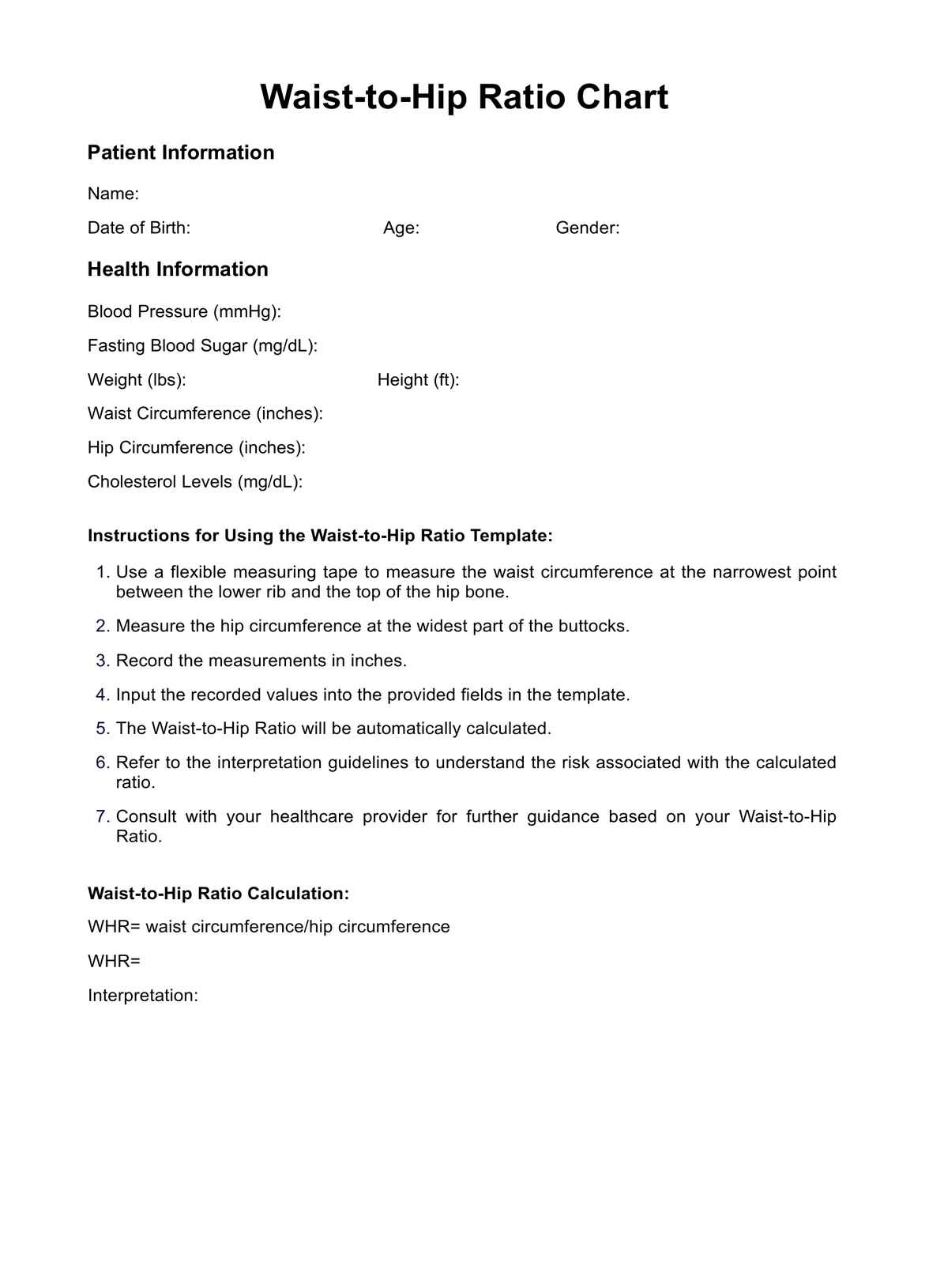Waist to Hip Ratio Charts are typically used as a visual tool to assess and monitor body fat distribution. They help individuals and healthcare professionals gauge the relative proportions of waist and hip measurements, providing insights into potential health risks associated with abdominal and visceral fat alone.

Waist To Hip Ratio Chart
Discover your health risk with the Waist to Hip Ratio Chart. Use our easy template to calculate and interpret your ratio for optimal well-being.
Waist To Hip Ratio Chart Template
Commonly asked questions
An "apple-shaped" body refers to a body type where excess fat is primarily carried around the abdominal area, resulting in a larger waist measurement. This shape is a significant health risk associated with a higher risk of cardiovascular diseases than a "pear-shaped" body.
The waist to hip ratio measures body fat distribution, calculated by dividing the waist circumference by the hip circumference. Higher ratios indicate an increased likelihood of cardiovascular diseases, as an excess is often linked to metabolic and cardiovascular disease.
EHR and practice management software
Get started for free
*No credit card required
Free
$0/usd
Unlimited clients
Telehealth
1GB of storage
Client portal text
Automated billing and online payments











